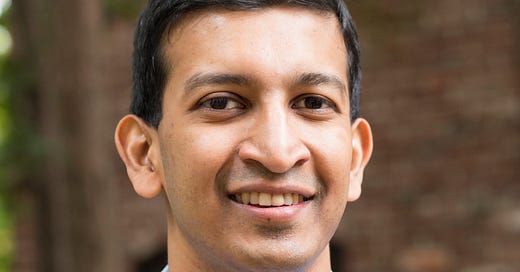The presence of unemployment insurance leads to people remaining unemployed for longer. The intuitive explanation is moral hazard — if we pay people only if they are unemployed, then unemployed they will remain. There is an unstated assumption here that jobs are all the same, when they are clearly not. People engage in search not to find just any job, but to find the right job. If people are constrained by their ability to borrow, then they may not search long enough for the right job, and everyone suffers for it. Providing people with money could allow them to find the optimal job, and everyone is better off. How much of the increase in the duration of unemployment spells from unemployment insurance is due to overcoming their lack of liquidity? And how much is due to moral hazard?
This is the premise of Raj Chetty’s “Moral Hazard vs Liquidity and Optimal Unemployment Insurance”, from 2006. He estimates that 60% of the increase in unemployment duration is due to people’s liquidity constraints being relieved, and 40% due to moral hazard.
He estimates this with a novel strategy. Baily (1978) shows how optimal unemployment insurance can be derived from three “primitives” (which is just jargon for terms which are not defined as combinations of other things) — the coefficient of relative risk aversion, the elasticity of unemployment duration with respect to benefits, and the drop in consumption as a function of UI benefits. Other models add particular constraints, such as a limit or price to borrow, but they are essentially empirically estimating each piece.
Chetty eschews this, and instead directly compares durations for households which have more savings and assets, and those which don’t. First, he looks at the difference in the change in durations among constrained and unconstrained households when states change their benefit generosity. Then, he compares those which received lump sum severance payments, to those who did not. For households with plenty of assets, the receipt of severance had no effect on the duration of unemployment, while for households which lacked savings, severance substantially increased the duration of unemployment. Using this, he can calculate out the optimal level of unemployment insurance. Assuming that unemployment insurance pays out for six months, the optimal rate is about half of income.
The striking implication of this is that we could get the best of both worlds if we replaced unemployment insurance with guaranteed benefits. It doesn’t even need to be a lump-sum payment, if we are concerned about people squandering their money early. Instead of paying up to six months, we could guarantee four months, and no more.
It is unfortunate that we cannot use the simpler elasticity approach to evaluate this, though we can estimate primitives — the key primitive to estimate being risk aversion. If we are extremely scared of our benefits not supporting us for the entire period we are unemployed, we might prefer the elastic insurance, moral hazard aside. I cannot, alas, answer whether it is optimal at this time.
The other concern would be that workers (perhaps in cahoots with their employers) would scam the government by getting laid off repeatedly, and then going back to work, perhaps to informal employers. This seems like less of a concern for the United States, though, which has relatively limited informal employment. The system can be exploited as such now — I doubt that there would be much of a difference from guaranteed benefits.



Another option is to have people formally declare unemployment and collect EITC checks whenever they want. They get taxed on the money they take out and their after-the-fact income for that year. People with high incomes won't bother to get a check, those with low incomes will.
https://splittinginfinity.substack.com/p/instead-of-targeting-welfare-charge
Then the problem of people scamming the government via informal employment falls to the IRS.
In this discussion I allways miss an elephant in the room: macro economic insurance. Perhaps when un employment lévels are low, moral hazard is important. But un-employment is to a large extent a macro phenomenon.
Moral hazard is less relevant in a recession, and insurance helps to sustain output.